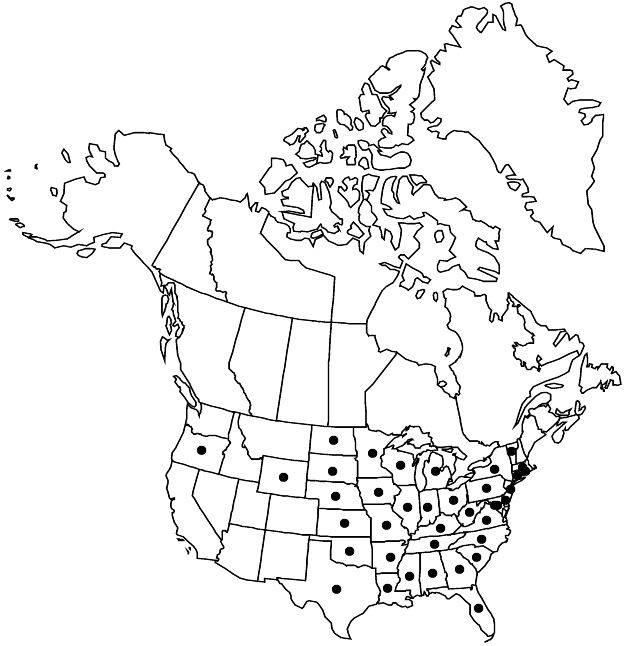Oxalis violacea
Sp. Pl. 1: 434. 1753.
Herbs perennial, acaulous, rhizomes usually absent, rarely present, slender, scaly, stolons absent, bulb solitary, bulblets at rhizome tips; bulb scales 3-nerved, margins villous-ciliate on distal 1/3–1/2. Leaves basal, rarely absent at flowering; petiole (4–)7–13(–24) cm; leaflets 3, green to purple abaxially, green adaxially, often with purplish, lateral band across lobes of each leaflet, rounded-obcordate to obreniform, (5–)8–15(–20) mm, lobed 1/4–1/3 length, lobes apically convex, surfaces glabrous, oxalate deposits in lines along margins at base of notch. Inflorescences umbelliform cymes, (1–)2–8(–19)-flowered; scapes (6–)9–23(–31) cm, glabrous. Flowers distylous; sepal apices with 2 orange, linear, apically confluent tubercles; petals white to pale green proximally with green veins, rose purple or lavender to pink or white distally, 10–18 mm. Capsules ovoid, 4–5 mm, glabrous. 2n = 28.
Phenology: Flowering Apr–May(–Jul) (with leaves) and Aug–Oct (usually without leaves, following rains).
Habitat: Sandy soils, gravelly soils, prairies, limestone glades, hills of granite, limestone, and rocky-clay, rock outcrops, bluffs, bottomland, oak-pine/heath, oak-hickory, live oak, or juniper woodlands, cutover pine forests, roadsides, disturbed sites, abandoned fields.
Elevation: 50–400(–1000) m.
Distribution

Ala., Ark., Conn., Del., D.C., Fla., Ga., Ill., Ind., Iowa, Kans., Ky., La., Md., Mass., Mich., Minn., Miss., Mo., Nebr., N.J., N.Y., N.C., N.Dak., Ohio, Okla., Oreg., Pa., R.I., S.C., S.Dak., Tenn., Tex., Vt., Va., W.Va., Wis., Wyo., Mexico (Coahuila).
Discussion
Oxalis violacea in the flora area is native to the eastern United States, reaching westward as far as the line of states from North Dakota to Texas; it is apparently non-native in Oregon and Wyoming, if those plants are correctly identified. Plants identified by M. F. Denton (1973) as O. violacea and those considered to have affinity to that species from Arizona, Colorado, and New Mexico are identified here as O. latifolia and O. metcalfei.
Selected References
None.